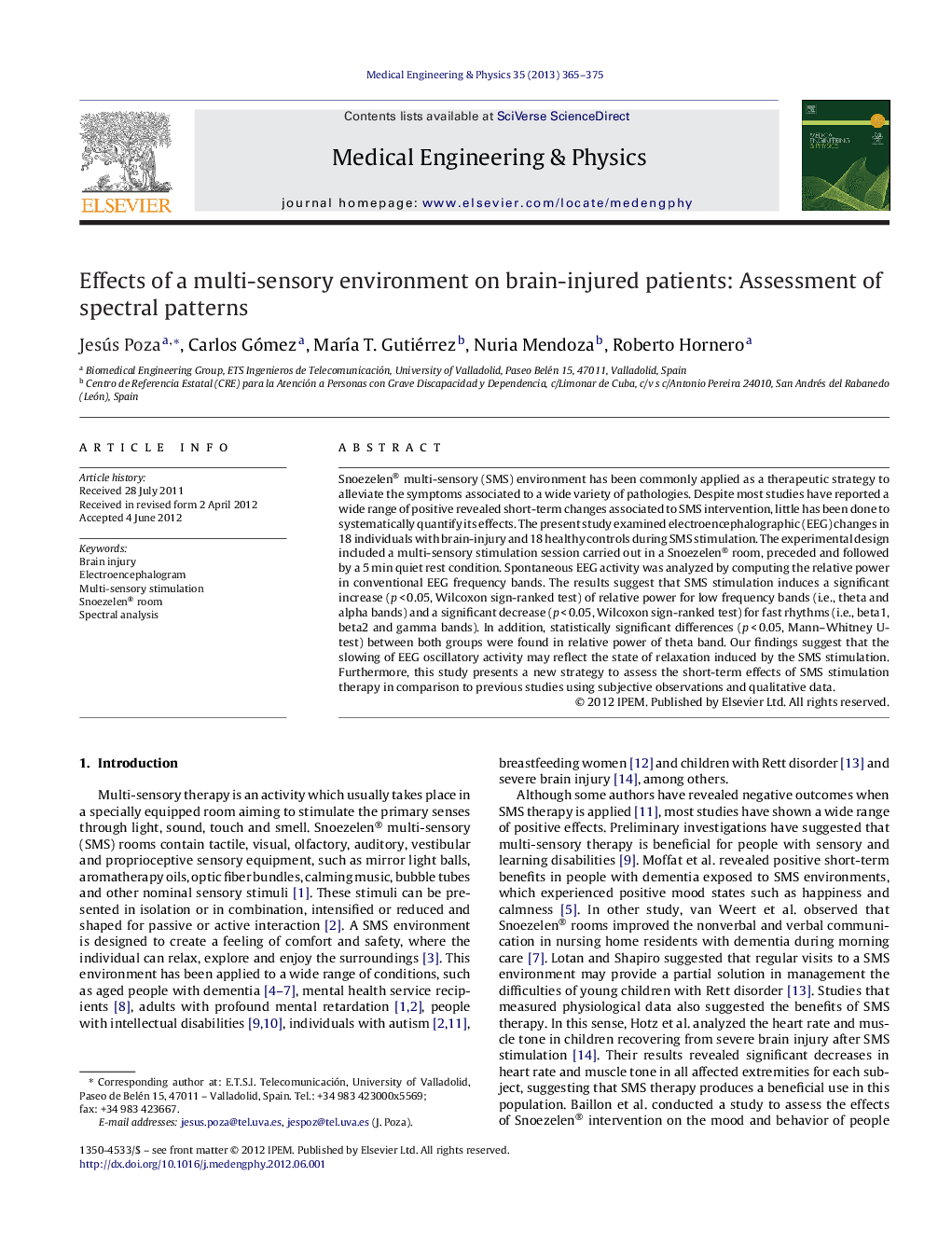| Article ID | Journal | Published Year | Pages | File Type |
|---|---|---|---|---|
| 10435109 | Medical Engineering & Physics | 2013 | 11 Pages |
Abstract
Snoezelen® multi-sensory (SMS) environment has been commonly applied as a therapeutic strategy to alleviate the symptoms associated to a wide variety of pathologies. Despite most studies have reported a wide range of positive revealed short-term changes associated to SMS intervention, little has been done to systematically quantify its effects. The present study examined electroencephalographic (EEG) changes in 18 individuals with brain-injury and 18 healthy controls during SMS stimulation. The experimental design included a multi-sensory stimulation session carried out in a Snoezelen® room, preceded and followed by a 5 min quiet rest condition. Spontaneous EEG activity was analyzed by computing the relative power in conventional EEG frequency bands. The results suggest that SMS stimulation induces a significant increase (p < 0.05, Wilcoxon sign-ranked test) of relative power for low frequency bands (i.e., theta and alpha bands) and a significant decrease (p < 0.05, Wilcoxon sign-ranked test) for fast rhythms (i.e., beta1, beta2 and gamma bands). In addition, statistically significant differences (p < 0.05, Mann-Whitney U-test) between both groups were found in relative power of theta band. Our findings suggest that the slowing of EEG oscillatory activity may reflect the state of relaxation induced by the SMS stimulation. Furthermore, this study presents a new strategy to assess the short-term effects of SMS stimulation therapy in comparison to previous studies using subjective observations and qualitative data.
Related Topics
Physical Sciences and Engineering
Engineering
Biomedical Engineering
Authors
Jesús Poza, Carlos Gómez, MarÃa T. Gutiérrez, Nuria Mendoza, Roberto Hornero,
